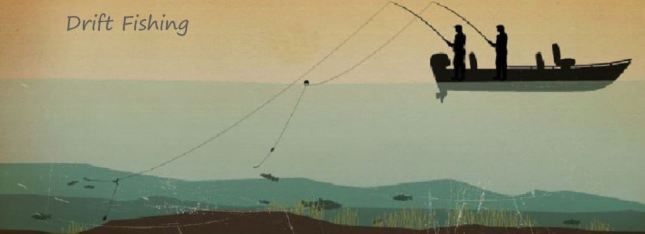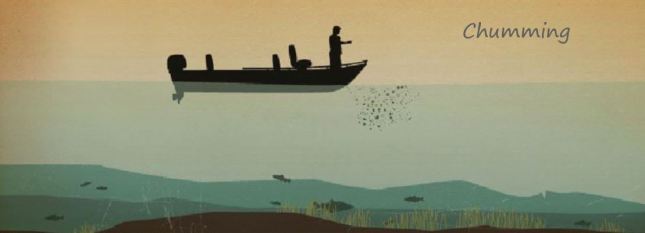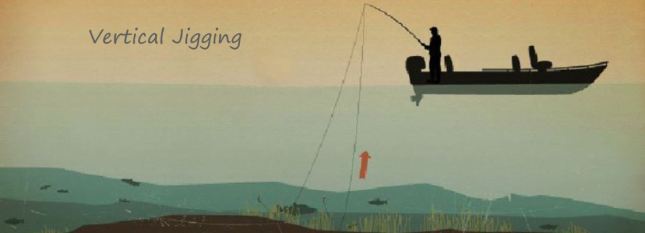Bait Casting
Bait casting is a style of fishing that relies on the weight of the lure to extend the line into the target area. Bait casting involves a revolving-spool fishing reel (or “free spool”) mounted on the topside of the rod. Bait casting is definitely an acquired skill. Once you get the hang of the technique (check out the casting animation), you will be casting your lures right on target into the structures where fish are feeding and hanging out.
With bait casting, you can use larger lures (1/2 to 3/4) and cast them for longer distances. To get started, you’ll need a rod with good spring action, a good quality anti-backlash reel, 10 to 15 pound test line and a variety of specific bait casting lures.
Spin Casting
We won’t say it’s foolproof, but spin casting is an ideal fishing method for beginning anglers. Spin-casting equipment is easier to use than bait casting. You can use it to cast both light and heavy lures without tangling or breaking your fishing line. Basic equipment includes a 7-foot rod, a spinning reel and 6 to 10 pound test line for casting 1/16 to 3/4 ounce lures. You can use an open-face, closed-face or spin-cast reel for spin casting.

Trolling
Trolling is done using a small electric motor that moves the boat quietly through the water so fish aren’t spooked. But you can also troll by towing a lure while walking along the edge of a shoreline, bridge or pier. The speed of the boat determines the depth of your bait. And the depth of the bait is determined by the species of fish you’re trying to catch. Use a spinning reel or a bait caster for trolling. Some states don’t allow motorized trolling, so check out your local fishing regulations to avoid tangling with the fish enforcers.

Still Fishing
Still fishing is a versatile way to go. You can still fish from a pier, a bridge, an anchored boat or from shore. You can still fish on the bottom or off the bottom in ponds, lakes, rivers and streams for a variety of species. And you can still fish during most seasons and during any part of the day. Your equipment and the size of the hooks and bait you use depends on what kind of fish you’re after. But your best equipment for still fishing is patience. You have to wait for the fish to bite.

Drift Fishing
Drift fishing allows you to fish over a variety of habitats as your boat drifts with the currents or wind movement. You can drift fish on the bottom or change the depth with a bobber or float. Natural baits work best. But jigs, lures and artificial flies will produce good results, too. You can drift fish on ponds, lakes, rivers and streams any time of the day and year.

Live Lining
Your fishing line is “live” when your boat is anchored in a flowing body of water like a river or stream. Use live or prepared fishing bait and keep it on or just off the bottom. Live lining off the bottom allows your line to drift with the current through holes and rocks where the fish may be holding. Your equipment and the size of your fishing hooks and lures depend on what type of fish you’re after.

Chumming
To attract fish or get them biting again, you can throw “chum” into the water where you’re fishing. You can use ground-up bait fish, canned sweet corn, dead minnows in a coffee can for ice fishing, pet food, even breakfast cereal. Or stir up some natural chum by scraping the bottom with a boat oar. Be sure not to over-chum. You want to get them interested in feeding; you do not want to stuff them before they get a chance to go after your hook. Chumming is not legal in all states. Check local fishing fishing regulations to make sure you are not illegally stimulating the hunger of your future catch.

Bottom Bouncing
Bottom Bouncing is done from a drifting or trolling boat, and it’s a great way to attract or locate fish during most seasons and times of day. Use a buck tail jig or natural bait and drag it along the bottom. The dragging motion causes the lure to bounce along stirring up small clouds of sand or mud. After a few strikes with bottom bouncing, you can drop anchor and apply other methods to hook the particular kind of species you’ve attracted.

Vertical Jigging
Jig fishing is popular and challenging. Why? Because the person fishing is creating the action that attracts, or doesn’t attract, the particular type of fish he or she is trying to catch. Here’s how it works. Cast out and let your jig hook sink to the bottom. Then use your rod tip to raise the bait about a foot off the bottom. Then let it drop back to the bottom. You can jig up and down, side to side or up and down and sideways. Jig rigs come in all sizes, shapes and colors, and can be used with or without live fishing bait.

Jig & Live Bait (minnow, leech or worm)
Attach the live bait to your jig hook and use it to bottom hop or sweep through your target area. To bottom hop, cast to the target and let the jig sink. Then reel in slowly, twitching the rod with every third or fourth turn of your reel. To sweep, cast to the target and drag the jig parallel to the bottom while reeling with a fairly tight line. Slow and steady gets the fish when you’re sweeping with a jig and live bait.

Surface Poppers
There’s nothing quite like the sudden, exciting rush of a fish rising to the surface and exploding onto your lure. Surface poppers are a style of top-water fishing bait that get their action from a cupped face carved or molded into the front of the lure body. Cast your popper out to the target area and let it settle briefly. By taking in small amounts of line slowly, the cupped face “pops” along the surface, imitating the action of prey, such as small insects, small frogs or even a small injured fish. To increase your chances of landing your catch, resist the urge to set the hook immediately when the fish strikes – let it take the popper under the water first – then set your hook firmly.
Using Spoons
Spoons are among the most popular lures and are easy to use. Some are thin and light, some are thick and heavy. And different spoons have different actions. How and where you’re fishing will determine how to use them.
Casting spoons: The basic technique is to cast it out and reel it back. A steady retrieve is usually best. If fish are curious but not striking, try slight variations in the speed or direction of your spoon.
Trolling spoons: Thinner and lighter than casting spoons so they can be trolled slowly. Typically used with depth control rig for open water species like trout, salmon or walleye. Can also be tied onto a rig with a diving crankbait and trolled on a long line to go after species near the bottom.
Topwater/Weedless spoons: Great for predators like bass, musky and pike that tend to hide in thick underwater cover. Cast over the cover, start retrieving and reel just fast enough to keep the lure on the surface.
Jigging spoons: Great for predators typically found on deep structure. Let the spoon freefall down. When it hits bottom, take up slack line until the rod tip is a foot above the water, then work the spoon with short jerks up and down. Usually, strikes occur when the spoon is falling, so be ready.
Follow our HUNTING BLOG
WEB RATES FISH HUNT CABINS PHOTOS
TESTIMONIALS BROCHURE HUNT BOOKLET

